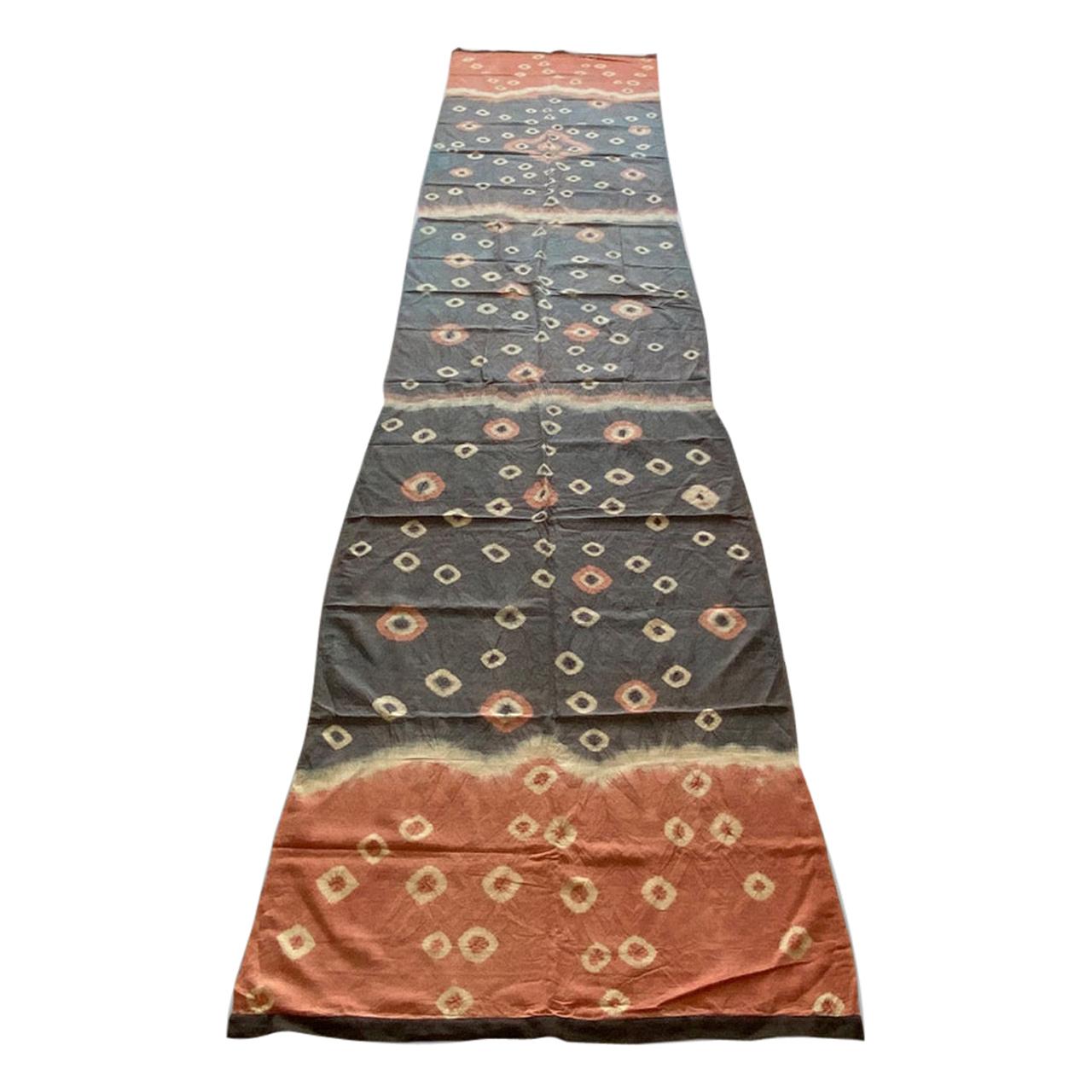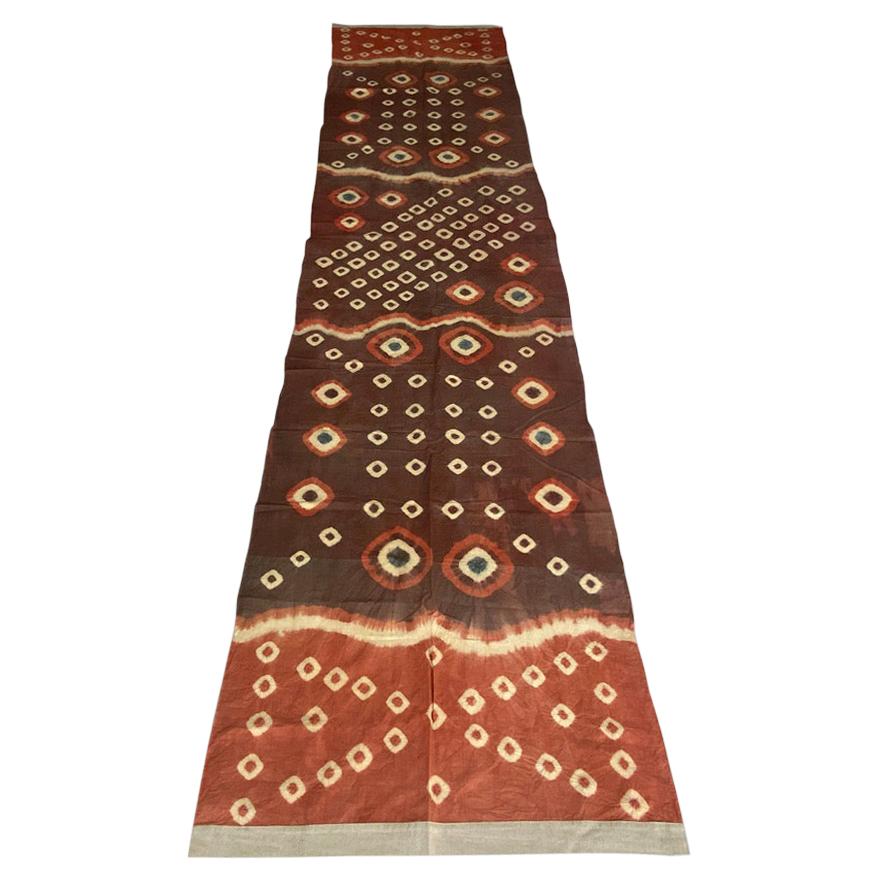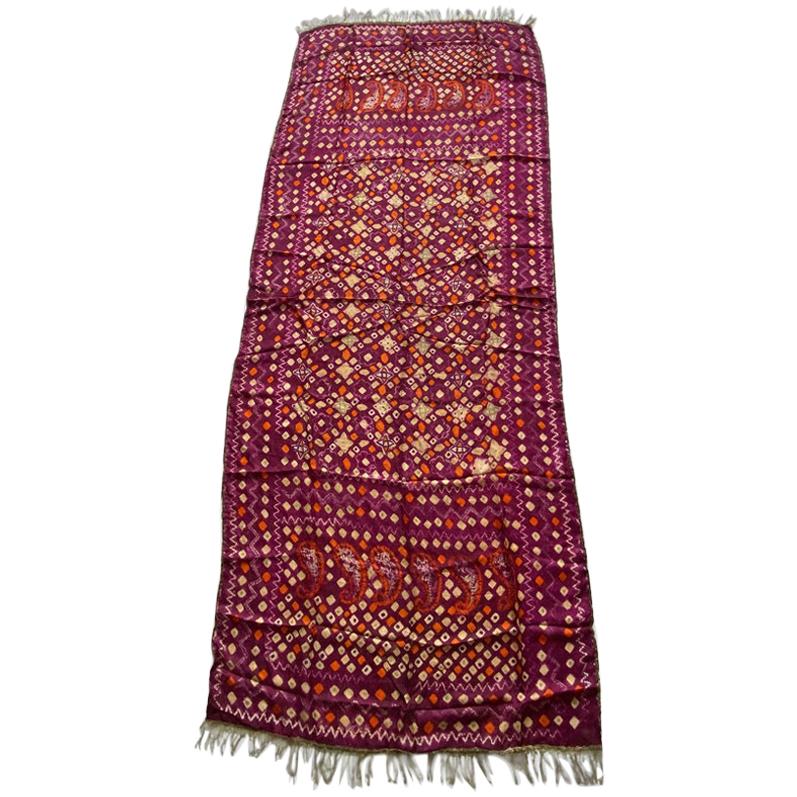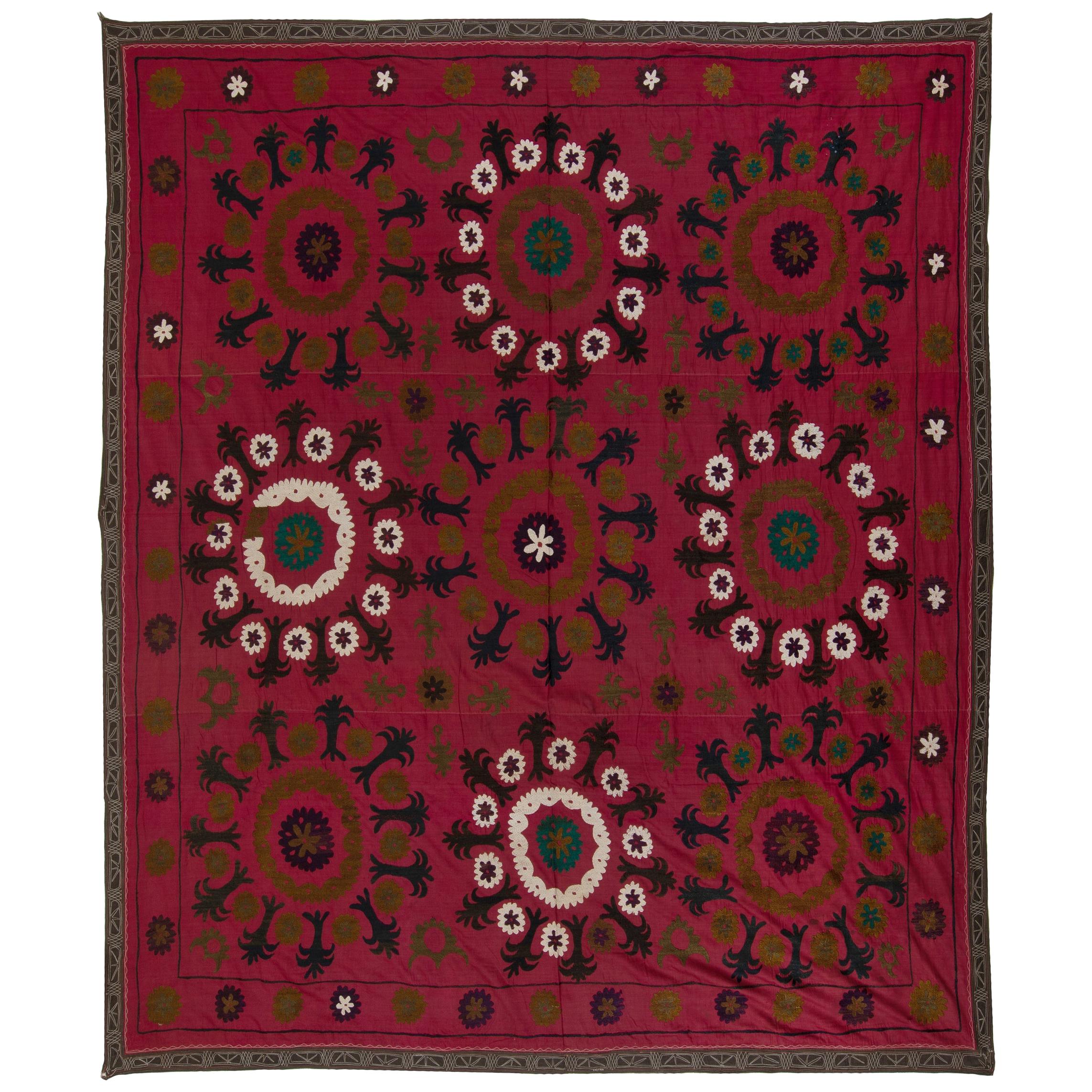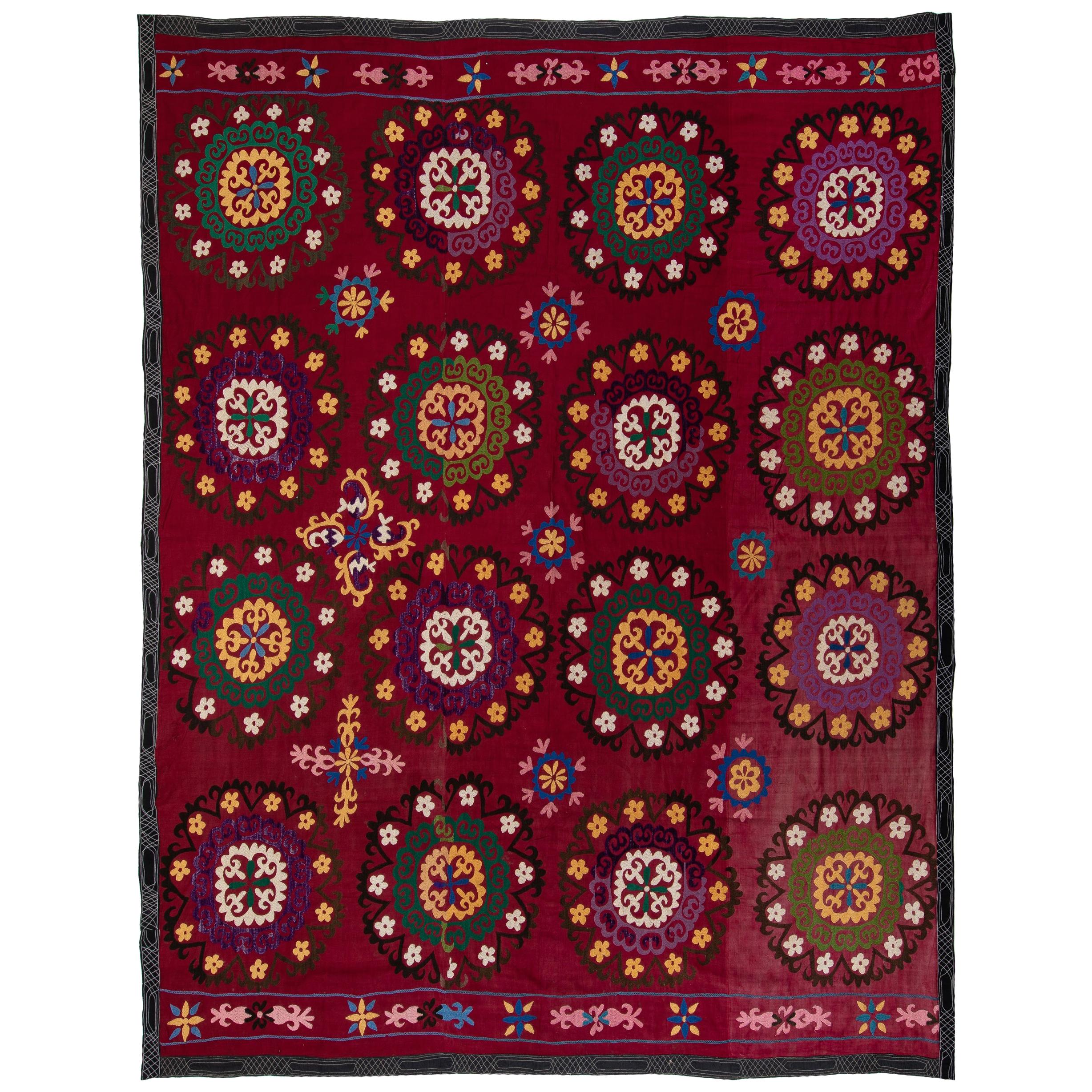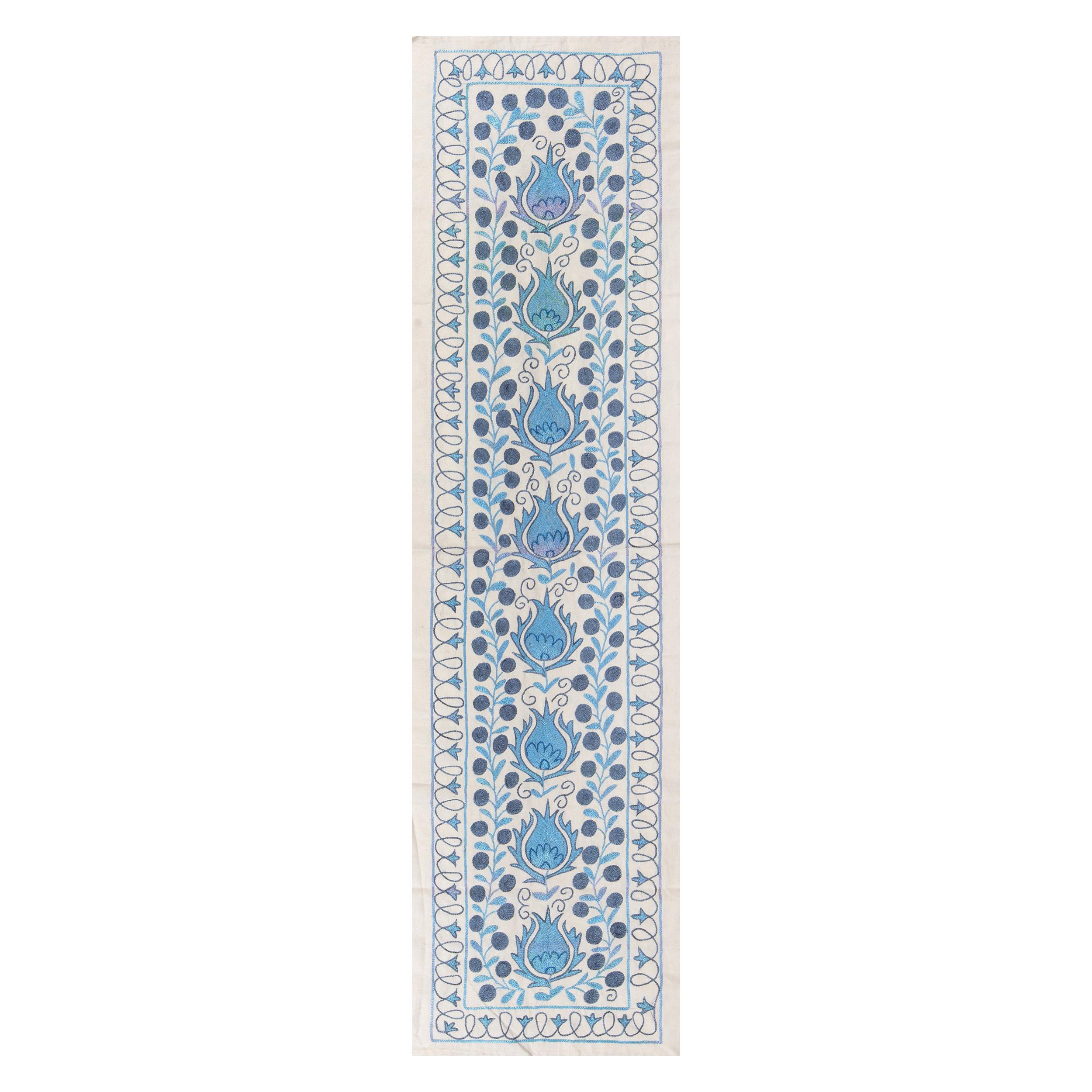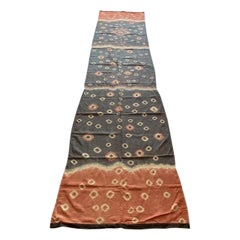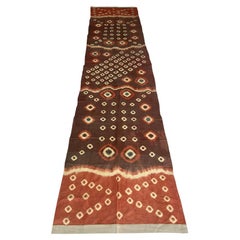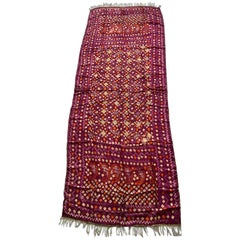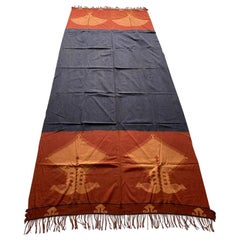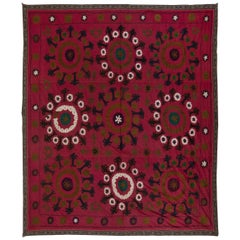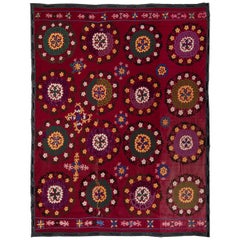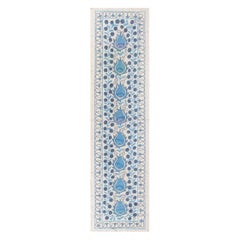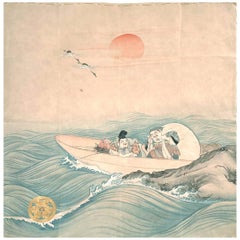Items Similar to Linen and Cotton Antique Textile from Toraja Land
Want more images or videos?
Request additional images or videos from the seller
1 of 18
Linen and Cotton Antique Textile from Toraja Land
About the Item
Striking “pelangi” tie-dyed textile from Toraja Land, South Sulawesi. We added a linen border, double backed on both ends. This beautiful panel can be used as a wall hanging, draped over a bed or sofa or as a window panel. We have a collection. The price reflects the one shown. The contrasting colors are fantastic. We only source the best. Excellent condition.
Andrianna Shamaris. The Leader In Modern Organic Design™.
- Dimensions:Height: 36 in (91.44 cm)Width: 151 in (383.54 cm)Depth: 0.4 in (1.02 cm)
- Style:Tribal (In the Style Of)
- Materials and Techniques:
- Place of Origin:
- Period:
- Date of Manufacture:Mid-20th Century
- Condition:Wear consistent with age and use.
- Seller Location:New York, NY
- Reference Number:Seller: 86TL1stDibs: LU1080623338982
About the Seller
5.0
Recognized Seller
These prestigious sellers are industry leaders and represent the highest echelon for item quality and design.
Platinum Seller
Premium sellers with a 4.7+ rating and 24-hour response times
Established in 1988
1stDibs seller since 2014
1,196 sales on 1stDibs
Typical response time: <1 hour
- ShippingRetrieving quote...Shipping from: New York, NY
- Return Policy
Authenticity Guarantee
In the unlikely event there’s an issue with an item’s authenticity, contact us within 1 year for a full refund. DetailsMoney-Back Guarantee
If your item is not as described, is damaged in transit, or does not arrive, contact us within 7 days for a full refund. Details24-Hour Cancellation
You have a 24-hour grace period in which to reconsider your purchase, with no questions asked.Vetted Professional Sellers
Our world-class sellers must adhere to strict standards for service and quality, maintaining the integrity of our listings.Price-Match Guarantee
If you find that a seller listed the same item for a lower price elsewhere, we’ll match it.Trusted Global Delivery
Our best-in-class carrier network provides specialized shipping options worldwide, including custom delivery.More From This Seller
View AllLinen and Cotton Antique Textile from Toraja Land
Located in New York, NY
Striking "pelangi" tie-dyed textile from Toraja Land, South Sulawesi. We added a linen border, double backed on both ends. This beautiful panel can be used as a wall hanging, draped ...
Category
Mid-20th Century Indonesian Tribal Textiles
Materials
Cotton, Linen
Linen and Cotton Antique Panel from Toraja Land
Located in New York, NY
Striking ‘pelangi’ tie-dyed textile from Toraja Land, South Sulawesi. We added a linen border, double backed on both ends. This beautiful panel can be used as a wall hanging, draped ...
Category
Mid-20th Century Indonesian Tribal Textiles
Materials
Cotton, Linen
Antique Burnt Orange and Purple Silk Textile
Located in New York, NY
Stunning contrasting colors featuring a metallic fringe on this beautiful fine silk, tie dye ceremonial shoulder cloth from Palembang, Sumatra. Early 20 century.
There are 2 very small holes shown on the last image, to be expected due to the age. We only source the best. This beautiful shawl can be worn or used as a wall hanging framed...
Category
Early 20th Century Indonesian Tribal Textiles
Materials
Silk
Andrianna Shamaris Minimalist Antique Hand Woven Cotton Textile
By Andrianna Shamaris
Located in New York, NY
Bold contrasting tones on this minimalist ikat from Toraja Land. Ikat is an ancient technique which is used to add patterns to textiles. The designs are created in the yarns rather than on the finished cloth, which results with the pattern on both sides in bold contrasting colors.This beautiful, extra long textile...
Category
Early 20th Century Indonesian Tribal Quilts and Blankets
Materials
Cotton
Indigo Cotton Sumba Textile
Located in New York, NY
Antique indigo and white textile from Sumba. The perfect size to wear as a shawl. Mythical characters, horses and birds intermingle in this graphic textile. Ikat is an ancient techni...
Category
Mid-20th Century Indonesian Tribal Quilts and Blankets
Materials
Cotton
Rare Bold indigo Cotton Sumba Textile
Located in New York, NY
Beautiful soft Ikat, with stunning seven inch tassels, on this rare bold indigo and white textile from Sumba. Fabulous on a sofa, bed, a wall hanging, or even to wear as a shawl. Myt...
Category
Early 20th Century Indonesian Tribal Quilts and Blankets
Materials
Cotton
You May Also Like
7x7.4 Ft Central Asian Suzani Textile, Embroidered Cotton & Silk Wall Hanging
Located in Spring Valley, NY
In the most technical sense of the word, "Suzani," in Central Asia and Iran, means needle and is used to describe this type of needlework, but to most people, such as decorators or c...
Category
Late 20th Century Uzbek Suzani Textiles
Materials
Cotton, Silk
$653 Sale Price
34% Off
Free Shipping
6.8x7.8 Ft Central Asian Suzani Textile, Embroidered Cotton & Silk Wall Hanging
Located in Spring Valley, NY
In the most technical sense of the word, "Suzani," in Central Asia and Iran, means needle and is used to describe this type of needlework, but to most people, such as decorators or c...
Category
Late 20th Century Uzbek Suzani Textiles
Materials
Cotton, Silk
$653 Sale Price
34% Off
Free Shipping
1.7x6.2 Ft Central Asian Suzani Textile. Embroidered Cotton & Silk Table Runner
Located in Spring Valley, NY
In the most technical sense of the word, "Suzani," in Central Asia and Iran, means needle and is used to describe this type of needlework, but to most people, such as decorators or c...
Category
2010s Uzbek Suzani Textiles
Materials
Cotton, Silk
$298 Sale Price
25% Off
Free Shipping
Japanese Antique Fukusa Textile Art Meiji Period
Located in Atlanta, GA
A Japanese silk Fukusa panel circa late 19th-early 20th century of Meiji Period. The front was beautifully decorated with Yuzen-zome, a labor intensive resist-dye technique invested ...
Category
Early 20th Century Japanese Japonisme Textiles
Materials
Silk, Beads
Japanese Antique Fukusa Textile Art Meiji Period
Located in Atlanta, GA
A Japanese silk Fukusa panel circa late 19th-early 20th century of Meiji Period. The front was beautifully decorated with Yuzen-zome, a labor intensive resist-dye technique invested by an artist monk Miyazaki Yuzensai (1654 -1736) of Edo period. The front cover likely depicts a scene from the Tale of Genji, showing a nobleman and his servant pays a visit to a lady in a fenced thatch-roof house under a high peak. The details of blossom trees and pines, as well as the characters, and scenery with a gradual color are astounding. It is telling that the Yuzen dying was used such an mastery.
The piece has a red silk backing and still retains two red tassels on the lower corners as well as decorative stitches along the edges. There is a patched design on the back likely a Mon symbol (family crest).
Fukusa is a traditional Japanese textile...
Category
Early 20th Century Japanese Japonisme Textiles
Materials
Silk
Japanese Antique Fusuka Textile Art Meiji Period
Located in Atlanta, GA
A Japanese silk Fukusa panel circa late 19th-early 20th century of Meiji Period. The front was beautifully decorated with Yuzen-zome, a labor intensive resist-dye technique invested by an artist monk Miyazaki Yuzensai (1654 -1736) of Edo period. The auspicious composition features a group of red-crown cranes, the symbol of longevity. Three of them perch on the rock by the ocean (East Sea) an two of them are in flight. Additionally, two egrets frolic in the wave. Yuzen dying was used extensively to showcase the amazing details such as the waves and the gradual coloring effect. Embroidery was used sparsely to highlight areas such as the legs of the crane to render it more dimensional details.
The piece has a red silk backing and still retains four blue tassels on corners as well as decorative stitches along the edges.
Fukusa is a traditional Japanese textile...
Category
Early 20th Century Japanese Japonisme Textiles
Materials
Brocade, Silk
Recently Viewed
View AllMore Ways To Browse
20th Century Textile
Mid Century Modern Textiles
Vintage Textile Art
Brown Antique Textile
Vintage Woven Textile
Hanging Textiles
Midcentury Modern Textile Art
Vintage Linen Crafts
Vintage Linen Textiles
Antique Hanging Textile
Linen Sofa Used
Organic Cotton Sofa
Tribal Bed
Draped Couch
Double Back Sofa
Bed End Sofa
Antique Indonesian Art
Bed Drapes
